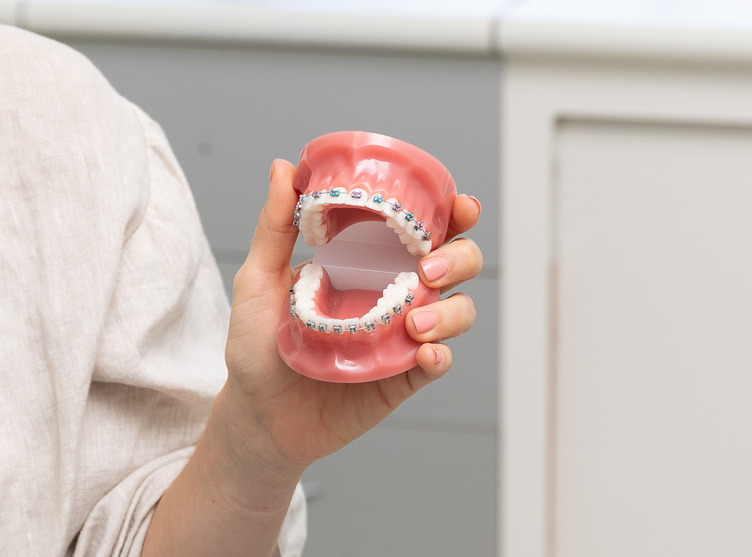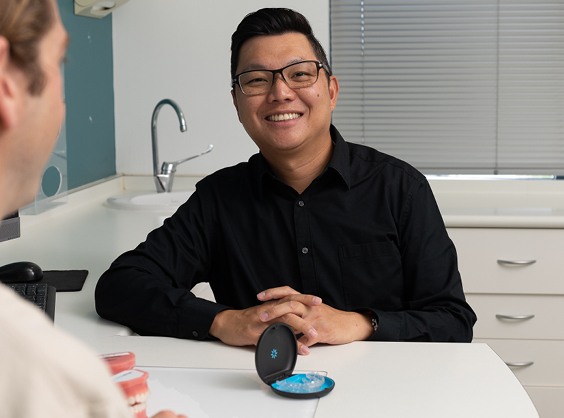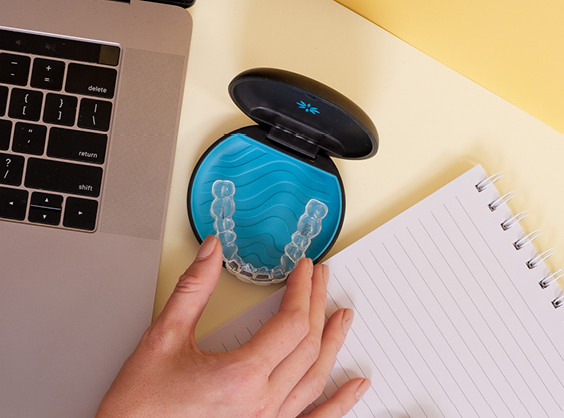
If you’re unhappy with your smile and not a huge fan of traditional metal, ceramic, or even lingual braces to straightening teeth, you are not alone.
There are alternative orthodontic treatments available to effectively improve your smile, and it is a popular choice for many adults and teenagers.
Can you straighten your teeth without metal braces?
The answer is: Absolutely! There are other treatments available to improve your smile, one of the most popular alternative teeth straightening treatments to traditional metal braces and ceramic braces is Invisalign clear aligners.
Founded in 1997, Invisalign is a series of plastic clear aligners to straighten teeth. It works to gently move your tooth into a desired position with minimal discomfort. Thanks to their clear aligners, Invisalign is hardly noticeable and wonderfully discreet. You can easily remove them when you eat or brush your teeth, as long as they are worn for at least 22 hours per day. Hello to straight teeth without braces!

Invisalign clear aligners are designed to improve misaligned teeth while not getting in the way of your lifestyle. The aligners are virtually invisible without the need to use herbst appliance or rubber bands like other teeth straightening braces options.
Should you try to straighten your teeth at home without professional help?
Attempting to straighten your teeth at home without professional guidance by an orthodontist can lead to a number of potential problems and extended treatment time, that’s why it is not recommended to try to align your teeth at home without professional help.
Orthodontic treatment involves more than just moving teeth, it also involves addressing issues related to the jaw and bite and your general oral health, and this requires proper diagnosis and treatment planning by a trained orthodontic professional.

But why can’t you achieve straight teeth at home beyond traditional metal, ceramic braces or clear aligners with an orthodontist? Read on below to find out why.
DIY Braces and aligners
DIY braces and aligners are becoming popular, although it is an improper and dangerous way to straighten teeth. DIY Braces are often not customised to an individual’s unique dental needs, and the use of these braces can result in a number of potential problems.
These DIY braces can potentially cause incorrect movement, increase the risk of tooth decay, risk of recession, risk of gum disease and may not correct underlying bite problems. It’s important to consult with an experienced orthodontist to receive safe, effective, and customised treatment that is tailored to your needs.
Gap Bands
Using gap bands is a home treatment that utilises small rubber or elastic bands tied or looped around in a certain way to apply pressure and hopefully shift them into place.
These gap bands are not a typical or recommended treatment and don’t fix alignment because they can cause severe damage to your roots, gums, and bone, leading to tooth loss. Replacing missing teeth can be more time-consuming and expensive.
While you may think these DIY and home treatments can be a temporary fix, it is best to visit your orthodontist and get a professional opinion as to why these methods wouldn’t be recommended.
Orthodontic treatment involves more than just moving teeth, and addressing issues related to the jaw and bite requires proper diagnosis and treatment planning by a trained professional.
Alternative Orthodontic Treatments
While braces are the traditional route, other alternatives to braces are listed below.
Invisalign Aligners
Invisalign is a type of clear aligner orthodontic treatment that uses a series of custom-made, clear plastic trays, instead of metal braces or lingual braces to align your teeth. The clear aligners are designed to fit snugly over the teeth and gently apply pressure to move them into the desired position.

Invisalign invisible braces successfully treats various dental issues, including crowding, spacing, overbites, and underbites. Invisalign is also an excellent option for adults who want to avoid metal braces but still straighten their teeth.
Say hello to straighten teeth without braces!
Retainers
Dental retainers are custom-made orthodontic devices that are designed to hold teeth in place once your orthodontic treatment (like braces or Invisalign) is completed. The removable retainer is typically used after braces or Invisalign treatment, such as Invisalign, to prevent teeth from shifting back into their previous position.
There are two main types of dental retainers:
- Fixed Retainers: Fixed retainers are small wires that are bonded to the back of the teeth and are not visible from the front. They are typically used on the lower front teeth and are left in place for several years to prevent any movement.
- Removable Retainers: Removable retainers are custom-made devices that fit over the teeth and are typically worn at night. They are made of plastic or acrylic and can be removed for eating and cleaning.
The length of time you will need to wear a dental retainer depends on your individual needs and the recommendation of your orthodontic professional. In some cases, you may need to wear a retainer for several years after orthodontic treatment to ensure that your teeth remain in their new position.
Dental retainers are an important part of orthodontic treatment, as they help to maintain the results achieved with braces or clear aligner treatment.
Key Takeaways
Crooked teeth
Baby teeth are the first to erupt in the mouth, and thumb sucking can exacerbate alignment problems. Crooked teeth can be a real pain, both literally and figuratively, and baby teeth are especially prone to crookedness. It is essential to take care of them from a young age to avoid these problems later in life.
Dental Braces
Adults need to take care of their adult teeth just as children do. Many patients have poor dental hygiene and struggle to maintain good oral hygiene, which leads to various problems, including gum disease, and bad breath. For most people, dental braces are the safest, most effective treatment plan to straighten their teeth permanently.
Not everyone can determine the treatment options they need for their dental needs, so it is best to work with an orthodontist, oral surgeon or dentist to find the right solution rather than attempting to straighten your teeth yourself with DIY braces or gap bands – or even dental veneers!
Your orthodontist have the same goals for your teeth as you do: to have good oral health and portray the best smile.